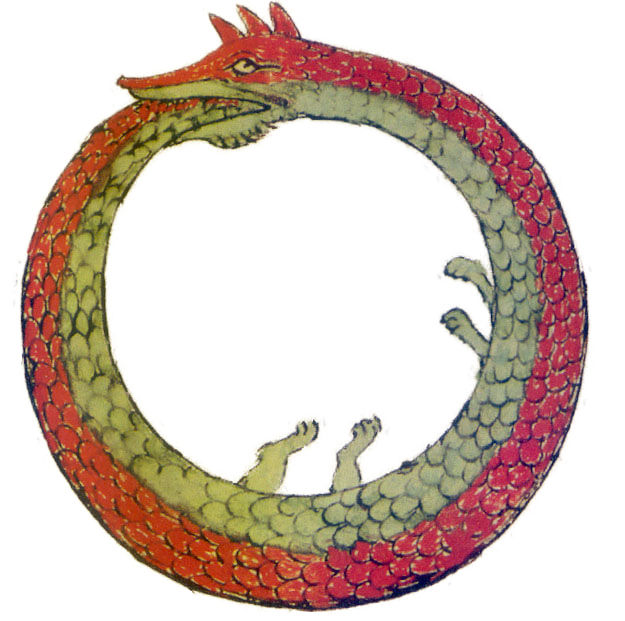
| HPS 0628 | Paradox | |
Back to doc list
The Liar
John D. Norton
Department of History and Philosophy of Science
University of Pittsburgh
http://www.pitt.edu/~jdnorton
The paradox of the liar has an apparently quite innocent start. It might begin with a tiresome quip. "I am now lying," some mischief maker might say. We see quickly see through the artifice. We have been told nothing useful at all. If the mischief maker's statement is true, then the statement is a lie; it is not true. If the mischief makers is lying, so that the statement is false, then it is true. We do not know which to believe since they contradict each other.
We are properly tempted to dismiss such trickery as mere childish word play. However, this simple sentence harbors a contradiction that makes it a true paradox. Over the past century, this paradox has engendered an enormous literature. Addressing the paradox has been the defining project of much work in formal logic in the 20th century. At its core is the idea of contradictory self-reference.

That core places it in the company of a most powerful formal idea, diagonalization. We have seen that contradiction-generating diagonalizations are the basis of modern analyses of infinity. We shall see in the next chapter that similar problems of self-reference have forced a reconception of the notion of set; and this reconception has become the foundation of over a century of work in set theory.
The simplest version of the liar paradox is formulated in terms of sentences, a basic unit of formal logic. The liar sentence is:
This sentence is false.
The transition from "I am..." to "This sentence..." is important. If we formulate the paradox as "I am lying." there is a risk of ambiguity The paradox is formulated in terms of a speech act and speech acts have speakers and social contexts. When someone says "Just kidding..." their assertion carries a lot more than the superficial meaning. We immediately know that prior to the assertion was another that may have caused offense; or may not. The speaker is not sure which. There is also a suggestion in the remark of an apology for this possible offense, but the apology is so equivocal that it is not a real retraction of the offending remark.
All this context is stripped away with the transition from "I" to "This sentence." The totality of the problem posed lies in the four words of the liar sentence.
That this sort of self-referential refutation is possible and even easy in ordinary language has a long history. The leading character in this history is Epimenides. Bertrand Russell formulates the paradox in 1908 in a terse form:
"The oldest contradiction of the kind in question is the Epimenides. Epimenides the Cretan said that all Cretans were liars, and all other statements made by Cretans were certainly lies. Was this a lie?..."
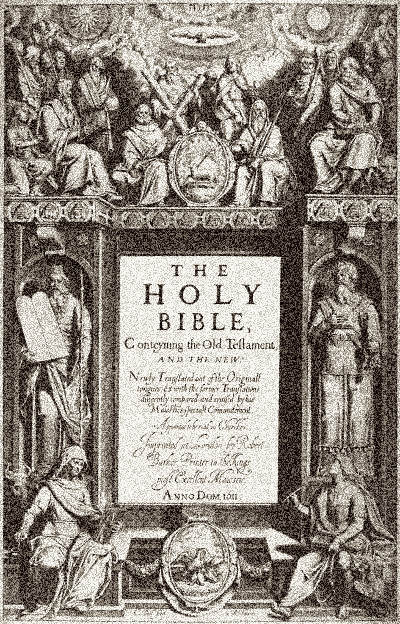
The association of Epimenides with self-refuting assertions is millennia old. Most quoted is a passage from The Epistle of Paul the Apostle to Titus. It reads in the King James Version:
"1:12 One of themselves, even a prophet of their own, said, The Cretians are alway [sic] liars, evil beasts, slow bellies."
It becomes clear if we take the fuller context that no point in logic is intended. It is merely an admonish to be wary of liars.
"1:10 For there are many unruly and vain
talkers and deceivers, specially they of the circumcision:
1:11 Whose mouths must be stopped, who subvert whole houses, teaching
things which they ought not, for filthy lucre’s sake.
1:12 One of themselves, even a prophet of
their own, said, The Cretians are alway liars, evil beasts, slow
bellies.
1:13 This witness is true. Wherefore rebuke them sharply, that they may be
sound in the faith;
1:14 Not giving heed to Jewish fables, and commandments of men, that turn
from the truth.
1:15 Unto the pure all things are pure: but unto them that are defiled and
unbelieving is nothing pure; but even their mind and conscience is
defiled.
1:16 They profess that they know God; but in works they deny him, being
abominable, and disobedient, and unto every good work reprobate."
Epimenides himself was a figure reportedly from the 7th or 6th century BC whose original words have been lost. We know little of him. He did, it seems, make some unfortunate, disparaging remarks perhaps about Cretans, of which he would have been one. Once the connection of Epimenides' name to self-refutation was made, the idea caught on and was passed through the generation of writers.
The idea of a self-refuting liar was a staple in the medieval literature on "insolubles," without an attachment to Epimenides. I have found, however, in 19th century logic texts that a connection between Epimenides and the liar paradox seemed routine. What is striking in these treatments is that the liar paradox is treated as just another trap for the unwary. There is no sense that it precipitates a crisis at the very foundations of logic itself.
The modern sense that the liar paradox is of foundational importance seems to come with Bertrand Russell's work in logic. In his 1908 paper cited above, Epimenides is the first of a list of variant forms of the liar paradox. They are intended to establish the need for Russell's theory of types. This is a reformulation of symbolic logic in which the liar sentence cannot be asserted. It has a hierarchical structure similar in spirit to the Tarski account we shall see below.
Russell's examples included many from set theory such as surround the Russell paradox of the next chapters. One is now standard in a list of variant forms:
"...'the least integer not nameable in fewer than nineteen syllables' must denote a definite integer; in fact, it denotes 111,777. But 'the least integer not nameable in fewer than nineteen syllables' is itself a name consisting of eighteen syllables; hence the least integer not nameable in fewer than nineteen syllables can be named in eighteen syllables, which is a contradiction.
Others in the standard list are given by a Stanford Encyclopedia article include:
Grelling's paradox: a predicate is "heterological" if it does not have the property it designates. "Is Greek" is heterological since the predicate itself is not Greek, but English. The paradox arises if we ask whether "heterological" is itself heterological.
Berry's paradox
(also mentioned in Russell's 1908 paper): What, we ask, is referred to by
the expression:
"the least number that cannot be referred to by a description
containing less than 100 symbols."
Whatever that number may be, the expression that refers to it has only 93
symbols.
The Barber: We are asked to consider a barber in some village or other location. That barber "... shaves all those, and those only, who do not shave themselves." Who shaves the barber?
Once you have seen a few examples like this, it become easy to see that they can be multiplied almost endlessly. One popular avenue is to increase the number of sentences at issue. The sentences refer to each other in such a way that assuming their truth or their falsity in each case leads to a contradiction. For example, we have sentences of either side of a card:
We can come up with more fanciful versions. Many more are possible.
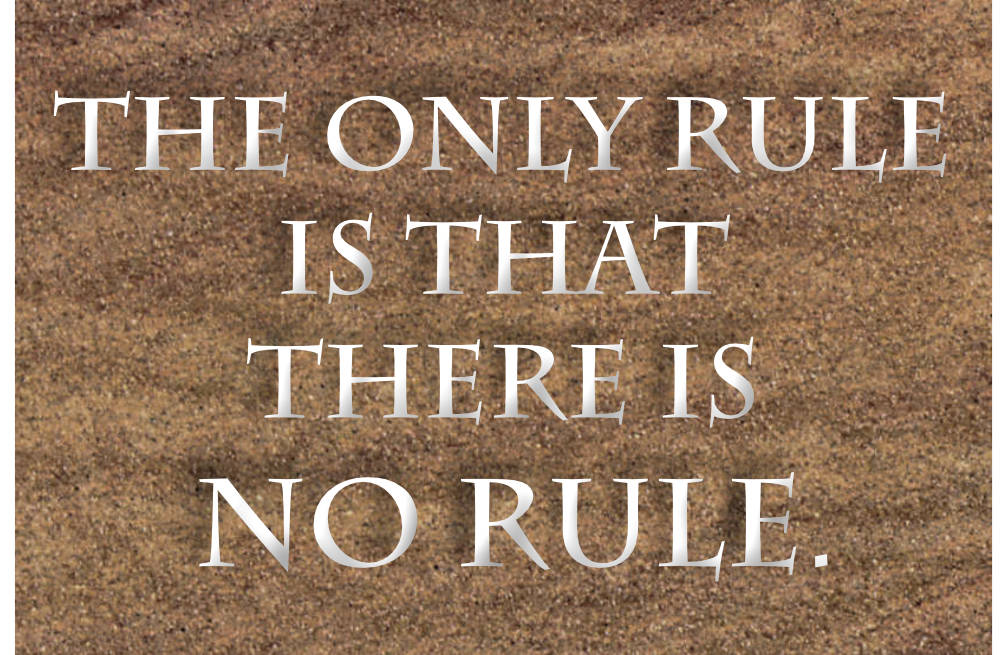
The two card version of the liar paradox shows that we can recover a liar paradox from sets of sentences that refer to each other. In the two card case, the paradox depends essentially on a circularity in the references. We can realize similar circularities with larger sets of sentences:
S1. Sentence S2 is false.
S2. Sentence S3 is false.
S3. Sentence S1 is false.
We can see truth values cannot be assigned to the propositions without contradiction.
If S1 is true, then the falsity of S2 tells us that S3 is true. The truth of S3 tells us that S1 is false.
That is:
S1-True → S2-False → S3-True → S1-False.
If S1 is false, then the truth of S2 tells us that S3 is false. The falsity of S3 tell us that S1 is true.
That is:
S1-False → S2-True → S3-False → S1-True.
This example is easy to generalize. As long as we have an odd number of sentences, we end up with a contradiction. For example:
S1. Sentence S2 is false.
S2. Sentence S3 is false.
S3. Sentence S4 is false.
...
S98. Sentence S99 is false.
S99. Sentence S1 is false.
Following the reasoning in the three proposition case, we see that that truth assignments have to alternate True/False/True/... All odd numbered sentences must have the same truth value; and all even numbered sentences must have the same truth value. That means that there are only two assignments possible for the whole set:
S1-True → S2-False → S3-True → ... → S98-False →
S99-True → S1-False
and
S1-False → S2-True → S3-False → ... → S98-True → S99-False →S1-True
In either case, we have a contradiction: A true S99 contradicts a true S1. A false S99 contradicts a false S1.
All these cases depend on a circularity in the references. In this last case it is a big circle, but a circle still.
Yablo has raised the possibility that we can get similar paradoxes without circularities in the references. He considers an infinite set of sentences:
S1. All sentences in the list after S1 are
untrue.
S2. All sentences in the list after S2 are untrue.
S3. All sentences in the list after S3 are untrue.
and so on for infinitely many sentences.
We arrive at a contradiction as follows:
If S1 is true, then we
have two conclusions:
(a) untruth of S2; and
(b) untruth of each of S3, S4, S5, ...
But (b) is what a truth S2 asserts. So S2 is true contradicting (a).
If S1 is not true, then at least one of the subsequent S2, S3, S4, ... is true. Say it is S57. We discover, however, that S57 cannot be true simply by repeating the arguments use to show that S1 cannot be true, but now applied to S57.
What are we to make of these paradoxes? The concern of logicians is that reasoning itself will break down if we are forever at risk of triggering contradictions in what seem to be quite innocuous sentences. One might imagine that the problem can be escaped just by banishing simple liar sentences from our discourse. In serious discussion, we just prohibit the liar sentence.
That is a good first start in insulating us from the problems of the liar. The immediate difficulty is that the bare liar sentence is just one of very many ways that a contradictory set of self-referring sentences may be set up. We had no trouble above in setting up a system of 99 sentences that implemented a version of the liar paradox.
We need something more systematic that can assure us that we are safe. The project falls within the study of theories of truth in formal logic.
It may seem that there is a simple escape from the liar paradox. To generate a paradox, we need an assumption that has been tacitly used above. It is:
The Principle of Bivalence: A sentence is either true or false. There is no third option.
Well--what if there were a third option? What if some sentences cannot be assigned only the value true, or the value false, but might also be assigned something neutral like "indeterminate"? This third value resides in a gap between true and false and thus sentences to which it applies are sometimes given the value "gappy."
Adding such a third truth value does seem to mirror the real life use of language. We often encounter propositions to which neither truth nor falsity seems apt.

https://en.wikipedia.org/wiki/File:Hoaxed_photo_of_the_Loch_Ness_monster.jpg
For example, some people think that:
"The Loch Ness monster is a prehistoric plesiosaur."
For those of us who think that there is no Loch Ness monster, this sentence is definitely not true. But to say that it is false is not right either. It leaves open the suggestion that the Loch Ness monster is something else, not yet identified. In this circumstance it seems safer to assign it an indeterminate truth value in much the same way as we do for entirely fictional propositions.
Did Sherlock Holmes ever count up the prime numbers between 100 and 200?
Since Holmes is a fictitious character, an indeterminate truth value seems most apt.
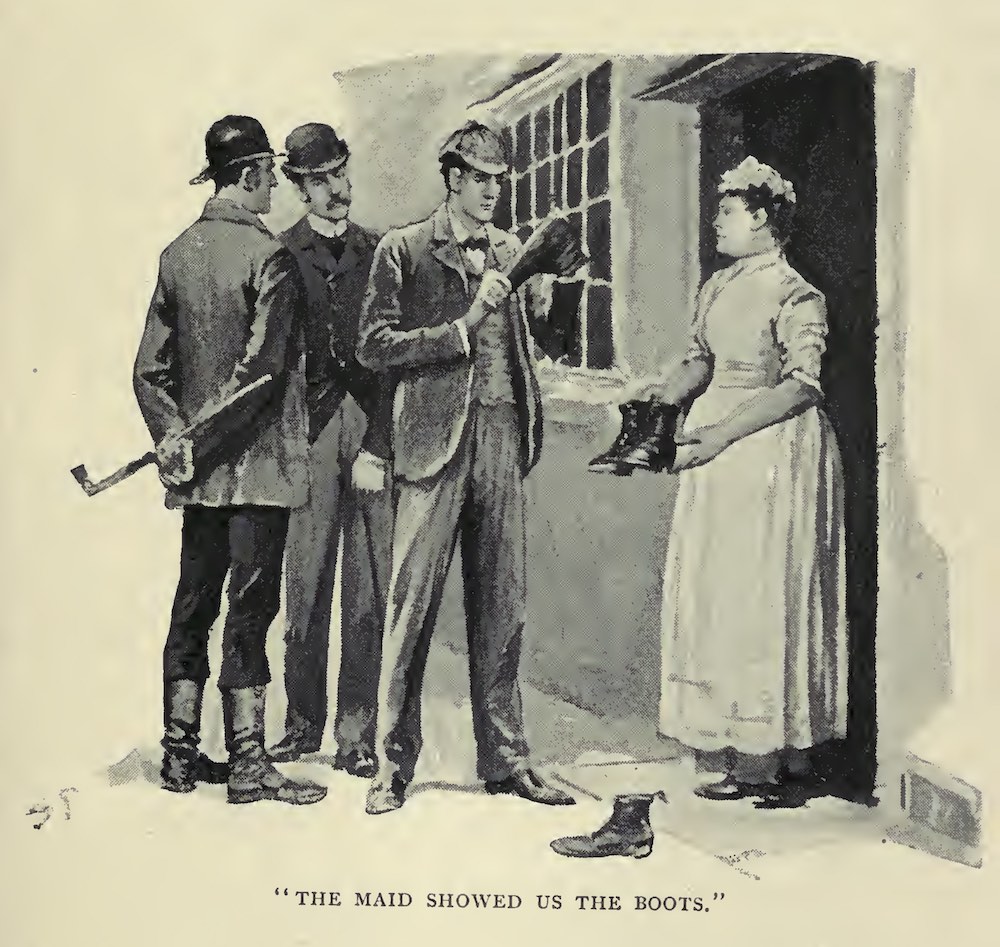
From "The Boscombe Valley Mystery," p. 92 in A. Conan Doyle, Adventures of Sherlock Holmes. New York: Harper & Bros. 1892
Whether this third truth value is useful in other contexts is a matter for discussion elsewhere. The present question is whether it helps us solve the liar paradox. The standard answer is that it does not. It just shifts the problem about a little. In place of the simple liar paradox, we have the strengthened liar paradox. It resides in the sentence:
This sentence is either false or indeterminate. (Call this "untrue.")
The familiar contradiction ensues:
If the sentence is true,
then what it asserts is not the case. So it is false.
If the sentence is false, then what it
asserts is the case. So it it true.
if the sentence is indeterminate, then what
is asserts is the case. So it is true.
More briefly, the strengthened liar just asserts of itself that it is untrue. if the sentence is true, then it is untrue. If it is untrue, then it is true.
Whatever else this third truth value brings, simple extensions like this suggest that it does not solve the liar paradox. It merely complicates the problem to be solved by promoting it from one that deals with two truth values to one that deals with three.
Alfred Tarski was one of the most prominent logicians of the 20th century. He developed elaborate, influential theories in formal, symbolic logic. Notably they employed the notion of an object language; then a meta language whose sentences referred to those of the object language; and then a meta-meta language whose sentences referred to those of the meta-language; and so on indefinitely.
...
↓ ↓ ↓ ↓ ↓
meta-meta-language
↓ ↓ ↓ ↓ ↓
meta-language
↓ ↓ ↓ ↓ ↓
language
Within this hierarchy of languages, Tarski could institute a revised notion of truth that was, by design, immune from the circularities of reference of the liar paradox. They key supposition was that each level in the hierarchy has its own notion of truth and falsity. If we number the languages 0, 1, 2, ... then assertions that some sentence is true or false arise in the next higher level language. That means that we have notions true1 and false1, true2 and false2,... There is no notion of truth or falsity expressible in the object language0.

In the object language, language0, we have simple sentences like:
Snow is white. (Tarski's classic example.)
2 + 2 = 4.
The Empire State Building is tall.
 "Snow
is white."
"Snow
is white."
In the first meta-language, language1, we have sentences like
"Snow is white." is true1.
"2 + 2 = 5." is false1.
 "Snow
is white."
"Snow
is white."
In the second meta-language, language2, we have sentences like
' "Snow is white." is true1.'
is true2.
' "2+2 = 5" is true1.' is false2.
and so on for languages higher in the hierarchy.
Limiting ascriptions of truth and falsity to just these uses blocks the circularities of reference that produce the liar paradoxes.
For example, take the liar sentence:
Liar: This sentence (Liar) is false.
This sentence must reside in one or other of the languages. Assume, for example, that is it language4. The notion of false needed to set up the paradox is false4. That is, what we need more fully is a sentence:
?? Liar-4: This sentence (Liar-4) in language4 is false4. ??
We could then go through the usual steps:
Liar-4 is false4 → Liar-4 is true4 → Liar-4 is false4Liar-4
→ is true4 → ...
and arrive at the impossibility of assigning a truth value to Liar-4.
This analysis is blocked, since it mixes levels in a way not allowed by Tarski's theory:
This sentence Liar-4 in
language4 is false4.
Sentences in language4 cannot assign truth4 values to sentences in language4.
Instead the term "this sentence" has to refer to a sentence in a lower language, say, language3. It cannot refer to itself, that is, to the sentence just labeled here as "Liar-4," since that sentence resides in language4. So we might have a sentence in language4 that asserts the falsity in language3 of some sentence S-3. Call it "meta" since it is a meta statement about a lower level language:
meta: A sentence (S-3) in language3 is false4.
However "a sentence" and "S-3" cannot designate sentences in language4; and thus cannot designate the sentence "meta." The usual steps that bring the contradiction are blocked. The liar is escaped
Overall, a liar sentence
cannot be formed, since Tarski's system precludes a sentence
making assertions of itself. Similar analyses block versions of the liar
paradox that employ circularities within larger sets of sentences.
As a piece of formal analysis, Tarski's theory is unobjectionable. It works within the terms it has set for itself. Looking more broadly, however, two problems have been identified. Both concern a mismatch with the way that truth and falsity are conceived ordinarily.
First, the restrictions Tarski applies exclude too much of what is in normal discourse. We could imagine a heated interaction in a courtroom trial:
Defense: Everything the prosecution says is
false!
Prosecution: Everything the defense says is false!
This interaction cuts across Tarski's languages in
a way prohibited by the restriction of his hierarchy. Yet assertions are not
paradoxical. Consistency is preserved if one of the defense or
prosecutions assertions is true and the other false.
(Puzzle: how might these sentences be
changed to recreate a paradox?)
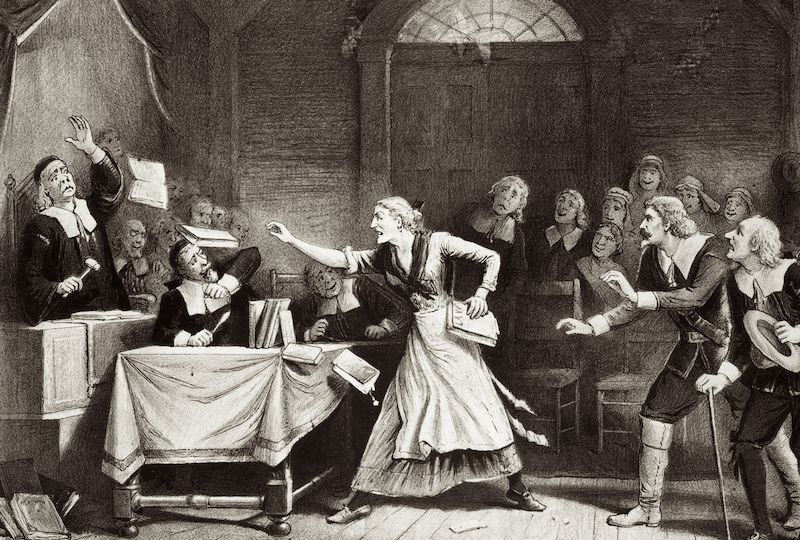 Trial
at Salem, Massachusetts, in 1692. Lithograph by George H. Walker, 1892.
Trial
at Salem, Massachusetts, in 1692. Lithograph by George H. Walker, 1892.
Second, in ordinary thinking, truth is just one thing. It does not come in hierarchical varieties. Similarly, falsity is just one thing. In ordinary circumstances, we would think that the same notion of truth is used in two places in the sentence:
The witness told the truth, when the witness reported that the defendant told the truth.
Within Tarski's theory, the two instances of
"truth" in this sentence would have to reside in different levels. We
would, however, read them as being the same notion.
Kripke in 1975 set out to escape the liar paradox again by sequentially introducing new truth and falsity attributions. However his proposal has the primary goal of not requiring the multiplicity of distinct notions of truth of Tarski's theory. There is to be just one notion of truth.
His construction begins with sentences that do not mention truth and whose truth or falsity is discernible. For example, we would have simple sentences like:
Snow is white.
2 + 2 = 5
Kripke then begins the iteration. Once we know what truth values can be assigned to these starting sentences, we can then assign truth values to new sentences asserting their truth or falsity:
"Snow is white." is true.
"2 + 2 = 5" is false.
The process can continue, assigning further truth values to these next sentences. And so on indefinitely. In all iterations, the meaning of truth and falsity is the same.
The picture is not so different from building up a jig saw puzzle. Start with the pieces in the center and keep building outward:
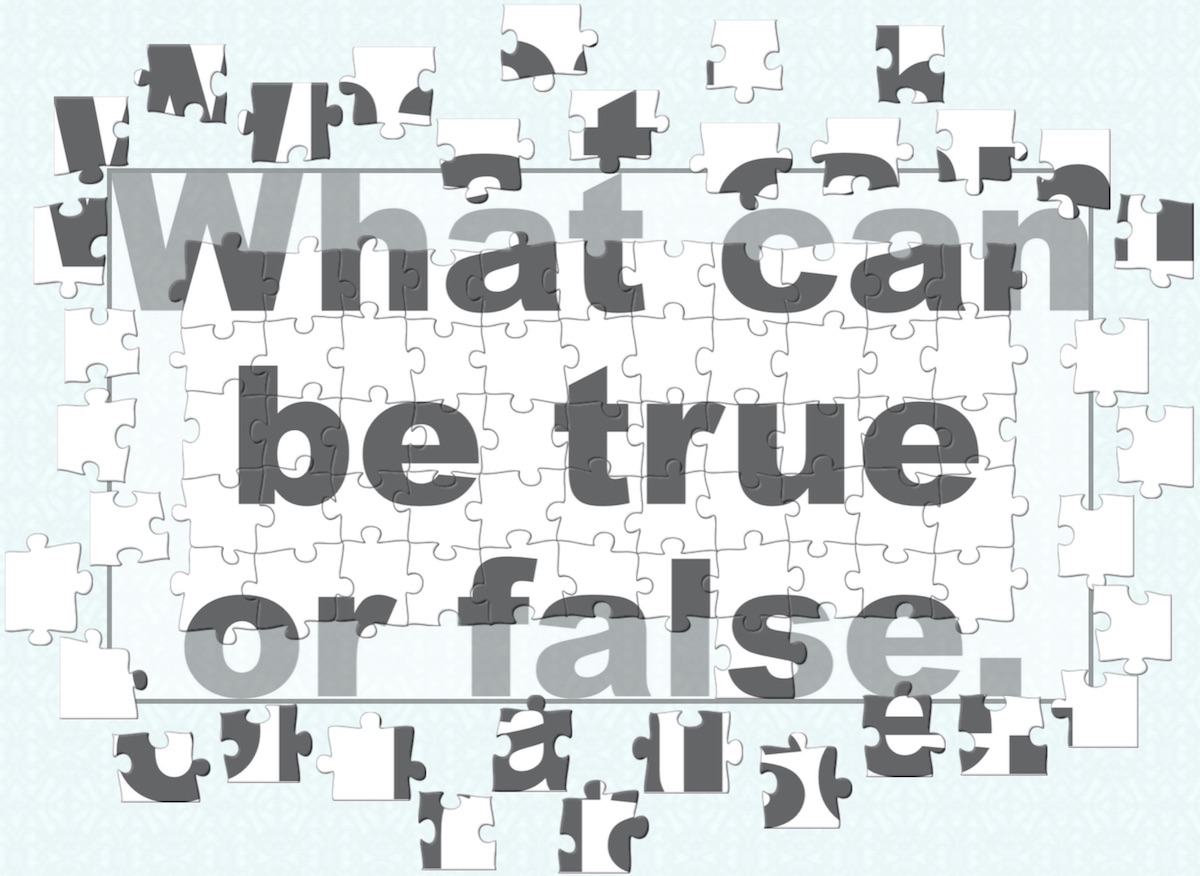
What makes the analysis interesting is that there is an infinite endpoint to the iterations. An infinity of them leads to a "fixed point" at which no further sentences are added. At this fixed point, the theory tells us that we have arrived at a stable notion of truth. In the analogy, the jig saw puzzle will be infinitely big, but it will be completed, such that no more pieces can be added.
The assignments have gaps, so that we end up with what, loosely speaking, amounts to a three-valued system: true, false, and those sentences left out. The procedure assigns values of true or false to all the sentences in its scope. It assigns nothing to those many sentences outside its scope. They are neither true nor false since the iteration simply neglects them.
The analysis provides some comfortable results. Dubious sentences like:
S: This sentence S is true.
are never assigned truth values as the iteration proceeds, since this sentence does not refer to sentences formed earlier in the iteration.
The liar sentence itself is assigned neither value of true nor false since it never appears in the iteration.
The problem with dropping bivalence above is avoided by the same means. That is, we might try to recreate the paradox by proposing the sentence:
This sentence has a truth value of false or neither.
The proposal fails since this sentence cannot arise in the iteration. It does not refer to a sentence formed earlier in the iteration. In addition, at no point in the iteration is the value "neither" assigned as a formal step in the iteration. That is, for two reasons, in the iteration, we cannot form the paradoxical sentence.
This sentence has a truth value of false or neither.
This discussion of Kripke's proposal is informal. His analysis did not deal with sentences that we would understand as carrying the rich import of ordinary assertions like "snow is white." Kripke's analysis is developed within the elevated confines of a purely symbolic logic. In a concrete case, Kripke took the sentences of arithmetic as a starting language. That then makes it easy to see within the formal analysis itself what makes sentences like "2 + 2 = 5" true or false. One needs only to consult an appropriate set theoretic representation of the numbers of arithmetic to settle the assignment. Importantly, this one system of truth determination can then be applied to the sentences added in the iteration.
While Kripke's analysis has advanced matters positively, it remains debated whether the success is complete.
---oOo---
These two approaches do not exhaust the many that have addressed the liar paradox. Others include Russell's original theory of types as well as proposals for paraconsistent logics, that is, logics in which contradictions are tolerated.
The liar paradox began with what appear to be mischievous quips that play fast and loose with truth. They settled down through the ages into "insolubles." That is, they came to be seen as curious twists of logic that needed to be observed and recorded, before moving on to the more serious business of codifying which inferences are valid. Then in the 20th century, they became a foundational challenge whose solution required the greatest of efforts in the mathematically abstract world of symbolic logic.
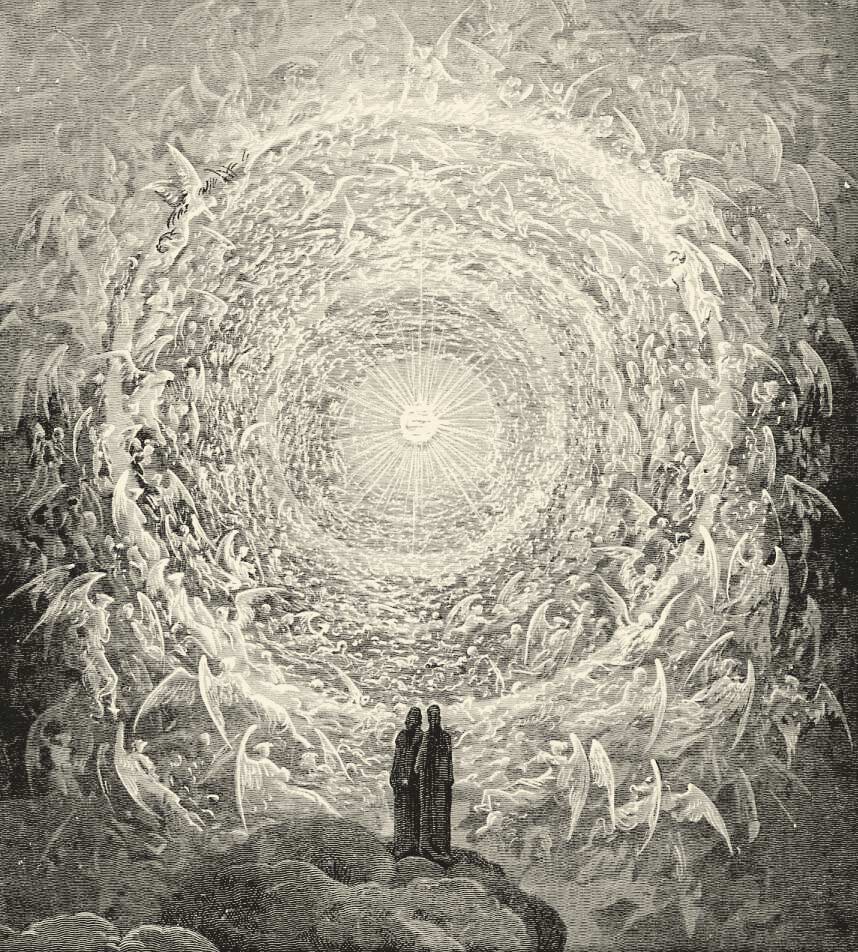
Dante and Beatrice gaze upon the highest
Heaven; from Gustave Doré's illustrations to the Divine Comedy, Paradiso
Canto 28, line 16–39
Someone, innocent of philosophy, who knows only of the informal starting point may well be bewildered by how far the problem has migrated. To them, to be told that a philosopher has a new and profound theory of truth would arouse the highest expectation. Are they to be told the final truths sought by mystics of all ages? Have we finally settled which of the great religions, if any, has secured the ultimate truth. No, they discover. Here are a set of prescriptions that preclude anyone from mischievous assertions of self-refutation. "I am lying" has been eliminated from discourse.
The lingering question is how are we to deal with the tension between the precise mathematics of symbolic logic and imprecisions of ordinary talk. There are, as far as I can see, two views. Each can be adopted profitably according to the situation at hand.
To begin, ordinary talk is imprecise. It deviates in many ways from the clarity presumed of reasoning in symbolic logic. We find throughout ordinary talk the sort of ambiguity in the example above of "Just kidding..."
One of the most basic rules of formal logic is the principle of double-negation. Applying "not" reverses the truth value of a proposition. A second application flips it back. "Not-not-proposition" is the same as "proposition." Affirmation has no such powers of inversion. "Yes...proposition" merely reaffirms. A double "yes" adds no doubts. It just doubly affirms.
Sidney Morgenbesser was a philosopher at Columbia University with a wicked sense of humor. His response to this last rule was the perfectly timed heckle: "Yeah, Yeah." It is an age old expression of disbelief. What makes it funny is precisely the tension between the overt meaning, a double affirmation, and broader contextual meaning accrued during the heckle. It is only the utterance of the remark in the appropriate context that reverses its meaning.
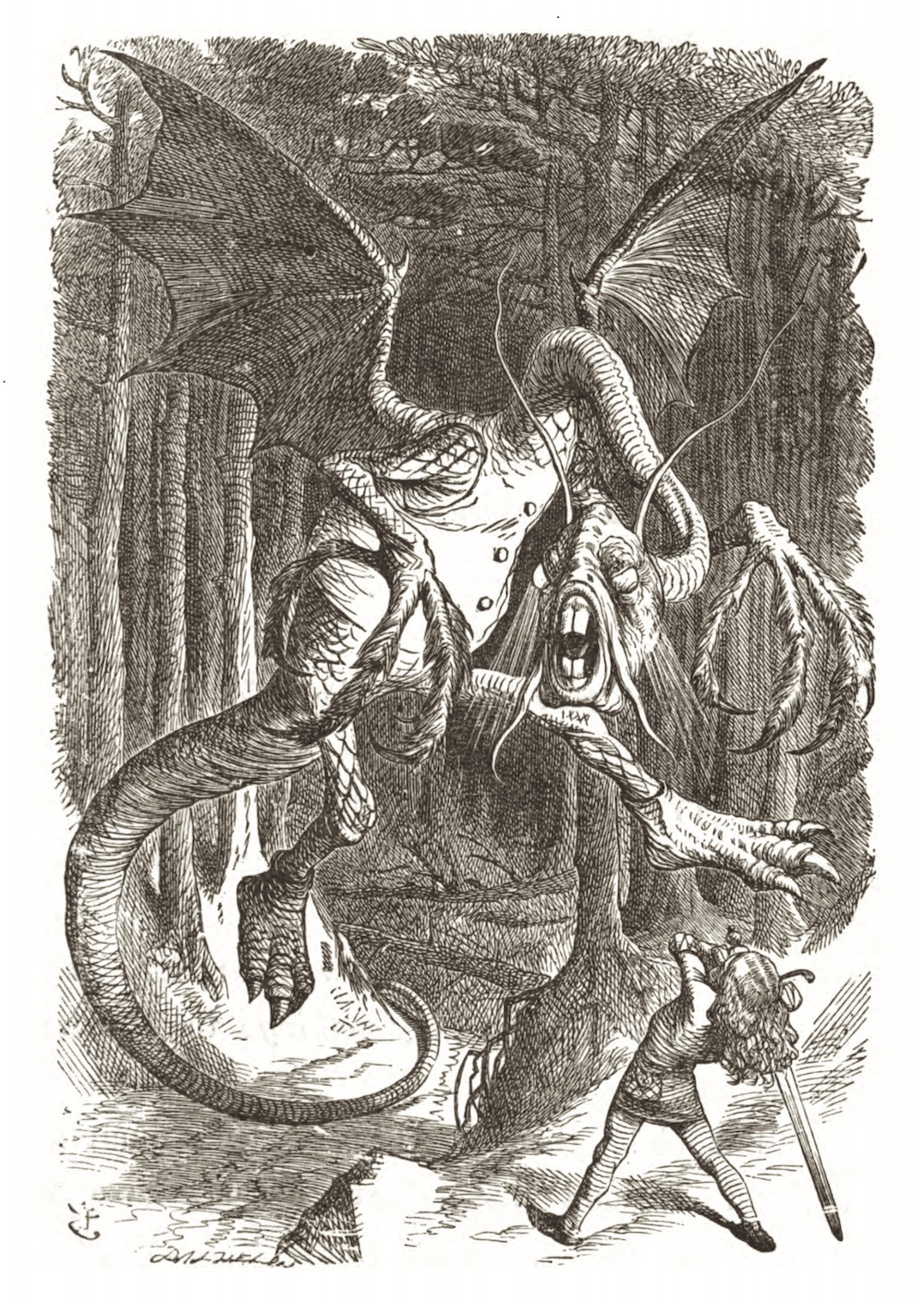
Lewis Carroll's celebrated nonsense poem from Through the Looking Glass, Jabberwocky, is literally nonsense. That is, it is verbiage without meaning or sense. However it remains one of the most beloved of nonsense rhymes. Readers find a meaning for it outside the literal.
The first two verses are:
'Twas brillig,
and the slithy toves
Did gyre and gimble in the wabe;
All mimsy were the borogoves,
And the mome raths outgrabe.
"Beware the Jabberwock, my son!
The jaws that bite, the claws that catch!
Beware the Jubjub bird, and shun
The frumious Bandersnatch!"
The gap between the ambiguities of ordinary language and the precision of a symbolic language is great. They differ on so much that a prescription for assigning truth values that avoids the liar paradox is just one small part of the bridge that would be needed to connect them fully.
This last view accepts that, in many cases, ordinary language is vague and that this very vagueness can be valuable. However when precision of thought is needed, vagueness is troublesome. Then we do need some standard of clear and trouble-free reasoning. That standard is what symbolic logic aspires to provide. It may be a standard that cannot be realized in ordinary contexts. It may well be that the mathematics of symbolic logic has advanced far beyond what we might find as useful guides when we debate tricky issues. Nonetheless, investigations into symbolic logic are providing us the guide we need. Without it, what standards do we have when we wish to praise some reasoning as strong and another as fallacious?
The popularity among philosophers in the twentieth century for symbolic logic was driven by movements in the earlier part of the century that carried the banner:
"Logical ..."
They included "logical atomism," "logical positivism" and "logical empiricism." Some of their proponents are shown here:
 Ludwig Wittgenstein |
 Bertrand Russell |
 Rudolf Carnap |
 Hans Reichenbach |
The adjective "logical" in the formal name of these various positions flagged the importance each of formal logic to each of them. Lingering in the background was a distant ambition. Can the content of philosophy be reduced to propositions expressed in the clear and precise language of formal, symbolic logic? If so, then all disputes could be resolved by formal manipulations in the logic. They would be resolved in much the same way as we might settle a dispute in arithmetic:
Does 1 + 2 + 3 + ... + 10 = 55 or 1 + 2 + 3 + ... + 10 = 65 ?
The question is answered once and for all by the
application of simple and universally accepted rules of addition.

https://commons.wikimedia.org/wiki/File:Abacus_6.png
While these hopes may have lingered in the background, they were never fully implemented in any of the approaches. Instead, as more logical apparatus was deployed by the developing systems, the systems themselves started to be overwhelmed by complicated technical issues in symbolic logic. Useful philosophical analysis was replace by tedious exercises in symbolic logic whose larger import became increasingly unclear. No doubt this shift contributed to the growing unpopularity of the approaches.
We might well expect the guidance of symbolic logic to become more important as we cede our reasoning to the symbolic manipulations of computer systems.

https://commons.wikimedia.org/wiki/File:Two_women_operating_ENIAC.gif
They can unwittingly press against the limits of what formal computation can do. We shall see in a later chapter that apparently simple manipulations can be shown formally to be impossible. Might we find a universal computer program that can tell us if any other program fed to it is unstable? It turns out the be impossible. Or might we have a computer tell us if some symbolically represented proposition is a logical consequence of a database of propositions? If the symbolic representation is rich enough, no computer can always succeed.
Here is one positive benefit of our exposure to the liar paradox. We now have an exemplar of logical trickery such that, if we encounter an instance of it, we need not trouble ourselves any further with it. Such a case is the paradox of the unexpected exam.
!!! Here I need to issue an alert. While I think the paradox can be dismissed as a variant form of the liar paradox, there is no such agreement in the literature as a whole. The paradox has generated an enormous literature of bewildering complexity. Take the analysis that follows as my view and that it is one among many. !!!!

https://commons.wikimedia.org/wiki/File:Classroom_-_England_-_1920s%3F_-_B%26W.jpg
A professor announces to the class that there will be an examination on one of the days of the following week: Monday or Tuesday or Wednesday or Thursday or Friday. The day will be so selected that it will be a surprise for the students until the day on which the exam actually occurs.
The students then reason as follows:
(not Friday). The exam cannot be scheduled for Friday, the last possible day. Since then on Thursday night, having had no exam, they will know that it must be scheduled for Friday, the last possible day.
| MONDAY |
TUESDAY | WEDNESDAY |
THURSDAY |
FRIDAY |
(not Thursday) The exam cannot scheduled for Thursday. For then on Wednesday night, knowing already that it cannot be scheduled for Friday, they can conclude that Thursday is the last possible day.
| MONDAY |
TUESDAY | WEDNESDAY |
THURSDAY |
FRIDAY |
This reasoning continues for Wednesday, Tuesday and Monday:
(not Wednesday), (not Tuesday), (not Monday)
| MONDAY |
TUESDAY | WEDNESDAY |
THURSDAY |
FRIDAY |
Overall, they conclude that the exam cannot be held on any day conforming with the professor's statements.
Yet... The professor schedules the exam for Wednesday. Exactly as the professor said, the students were surprised.
| MONDAY |
TUESDAY | !!!!!!!!!!!!!!!!!! WEDNESDAY |
THURSDAY |
FRIDAY |
To resolve the paradox, we reduce the professor's statements to a few assertions:
The second assertion needs to be clarified. Surprise is a psychological state that may be triggered differently in different people by processes that are hard to analyze. It may surprise some people that knots in ropes are impossible if space is four-dimensional. Others may see it immediately and not be surprised.
A tighter formulation of the paradox needs talk of surprise to be replace by something unequivocal. This replacement for E2 suffices:
The key word here is "unequivocally." For E2* to be the clarification of "unexpected" and "surprise" is must not be the case that the students can deduce securely which will be the day of the exam. That security fails if the students can infer both that exam must happen on some specific day and that it must not happen on some specific day. Then the inferences are no longer unequivocal.
To illustrate the importance of the qualification "unequivocally," imagine that a professor asserts:
M1. There is a mouse in this box.
Then the students can deduce unequivocally that there is a mouse in the box. They will not be surprised to see it when the box is opened.
However, if the professor asserts:
M1. There is a mouse in this box.
M2. There is NOT a mouse in this box.
then the students can infer both that there is a mouse in the box and that there is not a mouse in the box. The inferences are no longer unequivocal. Thus they are in no position to know what they will see when the box opens. They will be surprised by a mouse or by no mouse.
M1 and M2 together are a variant of the liar paradox. They are in effect:
"There is a mouse in this box," the professor
asserts.
"What I just said is false," the professor continues.
"But there is a mouse in the box."
To bring it closer to the liar, consider again the liar sentence:
This sentence is false.
Given this sentence you are unable to say if it is true or false simply because you can deduce both that it is false (since that is what the sentence says) and that it is true (since then it speaks truly).
One day version of the paradox
This last form of the liar paradox is, I believe, what is at issue in the unexpected exam. The easy way to see it is to consider:
The Unexpected Exam (one day version)
O1. There will be an exam tomorrow (the professor says).
O2. You will not be able to deduce from what you know that there will be
an exam tomorrow (the professor says).
From O1 the students can conclude that they can
deduce that there will be an exam tomorrow.
From O2 the students can conclude that they cannot
deduce that there will be an exam tomorrow.
This surfeit of information puts them in the same state as are we in trying to interpret the liar sentence. We have a surfeit of information that allows us to infer too much, so we end up with no definite conclusion.
When the day arrives, in this one day version, the professor either holds the exam or does not hold the exam. In each case, the students will be surprised. Does this not recreate the paradox? For it now seems the student were informed correctly when the professor announced the exam would be a surprise. No--this does not establish anything more about the paradox. It just repeats the contradiction. If the exam is held, the students are surprised since they were told in O2 they could not deduce it would be held, when O1 does allow them to deduce it. If the exam is not held, the students are surprised, since the professor had told them in O1 that there would be an exam. The surprise is merely a restatement of the original contradiction.
Many day version of the paradox
This problem, so clearly revealed in the one day version, is all that is involved in the paradox. The students' reasoning fails in the first step. They cannot deduce unequivocally that the exam will not be on Friday. For were they to arrive at Thursday night with no exam on the previous days, they would be in exactly the situation of the one day version. They could infer both that:
• the exam will be on Friday since it is the only
day left; and
• the exam will not be on Friday since the professor assured them it would
be a surprise (which here means not deducible).
| FRIDAY |
| FRIDAY |
Once the conclusion "(not Friday)" is accepted unconditionally, the students have trapped themselves logically. They would fall into the same trap if they decided that the liar statement is true and simply halted analysis at that point.
The addition of the further days cannot now rescue the students from logical calamity. Rather, it just enmeshes them in an increasingly tangled web of confusing, contradictory inferences.
It is tempting to think that the one day version of the paradox is not the real unexpected exam paradox, but is something different. Might it be that the real paradox resides in the interplay of the possible days? A one day version lacks that interplay. A way to escape the temptation is to see that the whole unexpected exam paradox disappears if we eliminate the fact of a last day.
If the professor could assert that there will be an exam on one of the following infinity of days 1, 2, 3, ..., then there is no paradox in asserting that it will be a surprise. For the steps of the students' argument cannot be started. The students need there to be a last day--Friday--to initiate the surfeit of inferences that leads to the paradox.
Yablo arrives at a liar like paradox within an infinite set of sentence that refer to each others' truth without any circularities. Is the use of an infinite set essential? Can a liar paradox be set up in a finite set of sentence without using some sort of circularity?
If a three-valued logic is prone to a strengthened liar paradox, what about a four-valued logic?
Does it matter if Tarski's and Kripke's proposals are in an idealized formal logic? Should not ordinary language aspire to the precision of formal logic?
In the paradox of the unexpected exam, what sort of paradox is it? A true contradiction? Or is it merely something intuitively unexpected?
July 2, 12, October 21, 2021. March 2, 2023.
Copyright, John D. Norton